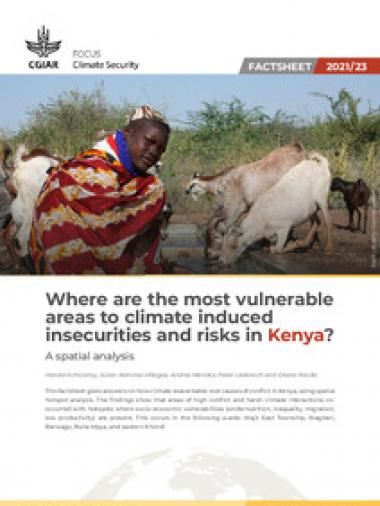Where are the most vulnerable areas to climate induced insecurities and risks in Kenya?

This factsheet gives answers on how climate exacerbates root causes of conflict in Kenya, using spatial hotspot analysis. The findings show that areas of high conflict and harsh climate interactions co-occurred with hotspots where socio-economic vulnerabilities (undernutrition, inequality, migration, low productivity) are present. This occurs in north of Uran, Sololo, and north of Obbu (hotspots of inequality and low production), Marsabit Central, Sagante/Jaldesa, and Karare (inequality and low production), and all the socio-economic hotspots in surroundings of Wajir East Township, Wagberi, and Barwago; surroundings of Bulla Mpya, and eastern of Khorof/Harar.
This publication is part of a factsheet series reporting on the findings of the CGIAR FOCUS Climate Security Observatory work in Africa (Kenya, Mali, Nigeria, Senegal, Sudan, Uganda, Zimbabwe). The research is centered around 5 questions: 1. How does climate exacerbate root causes of conflict? 2. Where are hotspots of climate insecurities ? 3.What is the underlying structure of the climate, conflict, and socio-economic system? 4. Are climate and security policies coherent and integrated? 5. Are policy makers aware of the climate security nexus?
Citation
Achicanoy H, Ramirez-Villegas J, Mendez A, Läderach P, Pacillo G. 2021. Where are the most vulnerable areas to climate induced insecurities and risks in Kenya?. CGIAR FOCUS Climate Security.